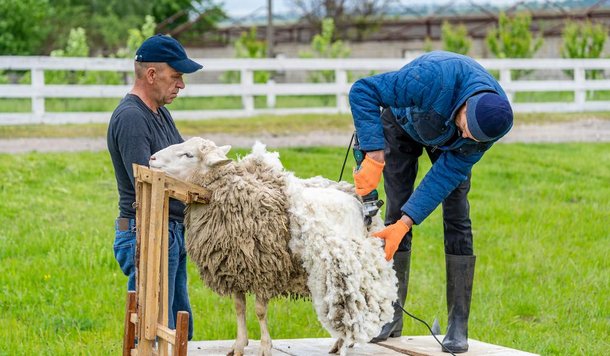Quando você usa uma blusa de lã ou um suéter, provavelmente não se lembra que uma ovelha fedorenta o vestiu primeiro. Quando os fazendeiros tosquiam ou cortam toda a lã do animal, ela é lavada para depois ser transformada em fio. Mas você sabe quantos metros de lã uma ovelha é capaz de produzir?
A criação de ovelhas é considerada uma das indústrias mais organizadas e antigas do mundo, afinal, ela existe desde os tempos bíblicos. Alguns registros históricos apontam que a domesticação desses animais começou há cerca de 10.000 anos na Ásia Central, sendo que as pessoas aram a usar sua lã para fiar tecidos por volta do ano 3500 a.C.
Colombo foi um dos responsáveis por trazer as ovelhas para a América do Norte. Mas, entre os séculos XVI e XVII, um contrabando intenso começou a desenvolver a indústria de lã dos EUA
A preciosa lã de ovelha

Normalmente, as ovelhas am pela tosquia uma vez por ano, mas isso depende da raça do animal. O tosquiador utiliza uma máquina específica para este fim, semelhante à usada para aparar os pelos de um cachorro. Uma ovelha pode produzir entre 2 e 30 quilos de lã a cada ano. Colocando isso em perspectiva, cada quilo de lã equivaleria a 16 quilômetros de fio ou, mais especificamente, 16 mil e noventa e três metros.
Um aspecto interessante sobre as ovelhas é que elas são fonte de uma substância chamada lanolina. Trata-se de uma gordura originária da lã antes dela ser lavada. A lanolina é um composto bastante presente em cosméticos e loções. Quando a lã é retirada da ovelha e ainda não sofreu nenhum processo, ela é chamada de lã crua. A partir daí, ela pode ar por mais de 70 fases de processamento para garantir que os fios feitos com ela sejam de alta qualidade.
No que diz respeito aos tecidos feitos com lã de ovelha, um dos pontos que mais chamam atenção é que eles são resistentes ao fogo, por isso, são considerados mais seguros de usar. Fora isso, as roupas oferecem uma ótima proteção contra um clima úmido e frio. Mesmo que sua blusa de lã se molhe um pouco na chuva ou na neve, ela ainda consegue oferecer boas doses de calor ao corpo. No mais, a durabilidade dos fios é excelente.
Além das roupas
 (Fonte: Shutterstock)
(Fonte: Shutterstock)
É possível que a maioria das pessoas imagine que a lã de ovelha seja usada apenas para fazer fios que serão posteriormente transformados em roupas. No entanto, há várias outras aplicações para ela. Por exemplo, o núcleo de uma bola de beisebol é composto por 150 metros de fio enrolado de lã de ovelha. Os pilotos de carros de corrida usam roupas especiais forradas com essa lã para reduzirem as chances de serem queimados em um eventual acidente.
Estudos também indicaram que esponjas dessa lã conseguem absorver óleos de derramamentos. Posteriormente, esse óleo poderia ser espremido e reciclado, assim como as esponjas serem reutilizadas.
Há milênios a lã de ovelha faz parte da vida do ser humano. Hoje, é uma mercadoria livremente comercializada, sujeita à oferta e a demanda global. Mesmo considerando que a lã seja responsável por apenas 3% da produção mundial de fibras, várias economias e o modo de vida de muitos países depende dela.
Fonte: MegaCurioso.